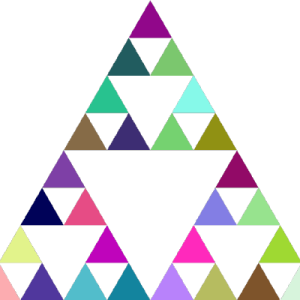Presented by:

Nathalie Carrié
[My profile on Linkedin, experiences and diploma @nathalierun](https://www.linkedin.com/in/nathalierun/)
[Je me présente](https://nathalierun.net/Je-me-presente.html)
[My Twitter account @nathrune](https://twitter.com/nathalierun)
[Math in class in pictures](https://nathalierun.net/lycee/piwigo/)
[My research papers in mathematics and computer science teaching](https://irem.univ-reunion.fr/spip.php?auteur8)
Volunteer Hosts
Thanks for helping with Snap!Con 2021!
Vedansh Malhotra
Vee is a simple recursive algorithm that explains how plants magically grow.
Vee sounds like the french world Vie that means Life. This is exactly what it is about.
Fractal objects will be defined and described with two simple examples: the Von Koch fractal and the Sierpinski triangle.
We will illustrate how recursiveness combined with randomness can explain the real world, as Benoît Mandelbrot says in his book Fractal objects.
Vee is a fractal tree algorithm that can be modelized with an L-system, and this will be detailed. The coding of the Vee algorithm will be illustrated with part of a Snap! project detailing how we play with list objects to do this.
We hope by this work to make feel the fractal geometry of Nature, then that of Life.
Moreover, this job is supposed to make people want to try to grow beautiful virtual plants using their imagination and creativity.
Summary
We will first explain what recursiveness is, necessary to create fractal objects, and then how to create beautiful fractal trees.
Part I - Fractal objects: What is it? What is it for?
Two very simple fractal objects to draw: the Von Koch fractal and the Sierpinski triangle
It will be explained how those two fractals grow
A variant of the Von Koch curve initiated with a circle arc will be shown
Introducing randomness into fractals is necessary to simulate the real worldPart II - Principle of a fractal tree
Coding the skeleton of a fractal tree with L-systems
Let's code now a fractal treePart III - Let's code a beautiful fractal plant with Snap!
Let’s explain the construction outline with Snap!
La magie de la Vie, the magic of the Vee algorithm revealed:
- Let’s play with the lists of objects
- What if Vee himself could be a leaf?
- Inserting several Vee in the list of possible leaves increases the probability of having a tree growing with multiple branches…
The first part of this work is largely due to Benoît Mandelbrot, with his book Fractal objects.
The second part is based on the Wikipedia description of L-Systems.
All constructions and illustrations are done or explained with Snap!.
You can see a very pretty plant generated by this algorithm in this tweet.
- Date:
- 2021 July 29 - 12:40 PST
- Duration:
- 20 min
- Room:
- Room 1
- Conference:
- Snap!Con 2021
- Type:
- Talk